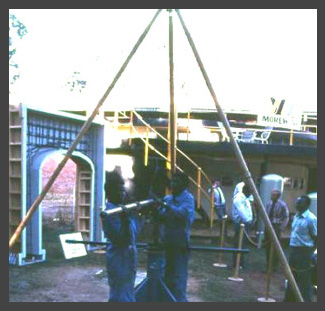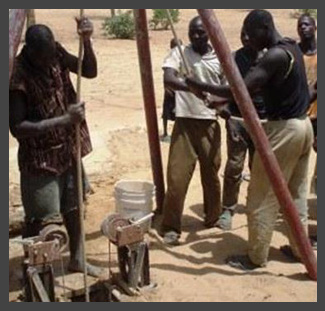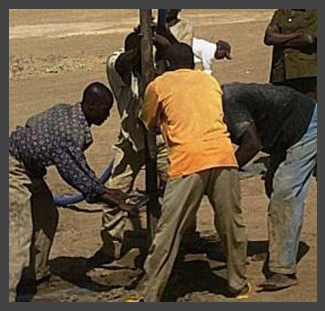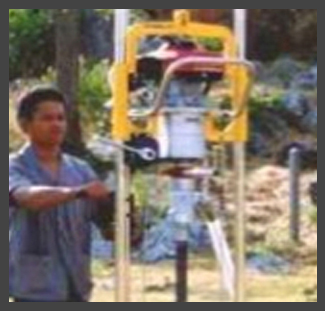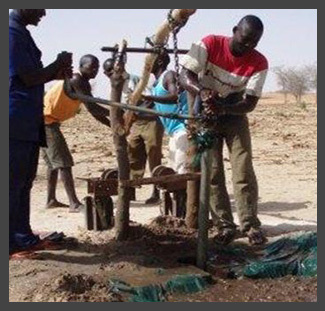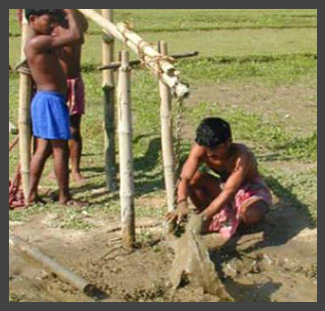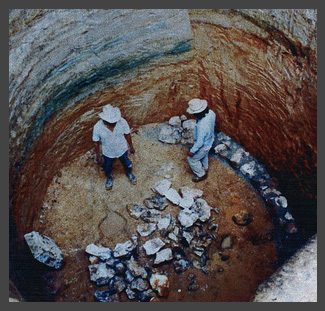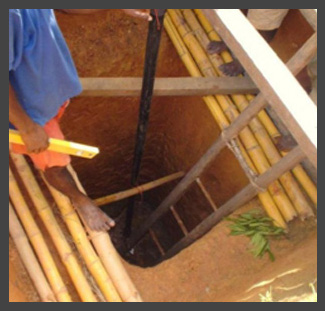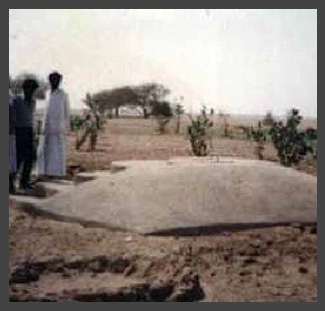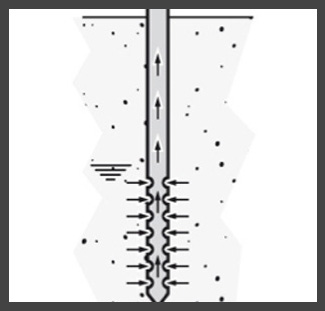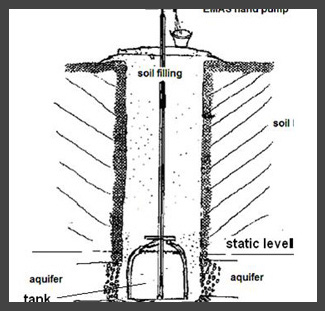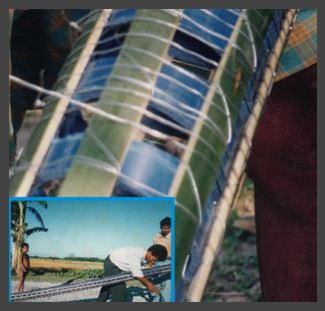Difference between revisions of "Drilling or digging"
(→Field experiences) |
(→Manual drilling links) |
||
| (16 intermediate revisions by the same user not shown) | |||
| Line 1: | Line 1: | ||
| − | + | {{Language-box|english_link=Drilling or digging |french_link=Forage ou excavation |spanish_link=Coming soon|hindi_link=Coming soon|malayalam_link=Coming soon|tamil_link=Coming soon | korean_link=Coming soon | chinese_link=钻井或挖掘井 | indonesian_link=Coming soon | japanese_link=Coming soon}} | |
| + | |||
Access to groundwater is not always easy, so many different types of drilling mechanisms (ranging in depth capacity and costs) are covered in this section. Africa, for example, is said to have rich amounts of groundwater, as compared with other continents. That said, machine-drilled wells are often too expensive for most of the population. Drilling ‘shallow’ wells (up to 35 meter depth) by hand, reduces the price of a well by a factor 4 to 10 compared to a machine-drilled borehole. This cost reduction enables NGOs and Governments to construct more water wells, but also ‘opens the door’ to villagers, farmers, schools and small communities to have a well constructed independently through the private sector. | Access to groundwater is not always easy, so many different types of drilling mechanisms (ranging in depth capacity and costs) are covered in this section. Africa, for example, is said to have rich amounts of groundwater, as compared with other continents. That said, machine-drilled wells are often too expensive for most of the population. Drilling ‘shallow’ wells (up to 35 meter depth) by hand, reduces the price of a well by a factor 4 to 10 compared to a machine-drilled borehole. This cost reduction enables NGOs and Governments to construct more water wells, but also ‘opens the door’ to villagers, farmers, schools and small communities to have a well constructed independently through the private sector. | ||
| Line 6: | Line 7: | ||
| − | <div style=" background-color: #efefef; text-align: center; -moz-border-radius: 2px; -webkit-border-radius: 2px; border: | + | <div style=" background-color: #efefef; text-align: center; -moz-border-radius: 2px; -webkit-border-radius: 2px; border: 5px solid #dedede; padding: 5px;" > |
| − | {|cellpadding=" | + | {|cellpadding="5" cellspacing="0" width="100%" |
|- | |- | ||
|colspan="5" style="background-color:#efefef;"| | |colspan="5" style="background-color:#efefef;"| | ||
|- | |- | ||
| − | + | |style="background:#efefef;"|[[Image:Auger_drilling.jpg|center|100px|link=Hand auger - general]] | |
| − | + | |style="background:#efefef;"|[[Image:Vonder_rig.jpg|center|100px|link=Hand auger - Vonder rig]] | |
| − | + | |style="background:#efefef;"|[[Image:Point_and_well.jpg|center|100px|link=Hand auger - driven wells]] | |
| − | + | |style="background:#efefef;"|[[Image:Percussion_drilling.jpg|center|100px|link=Percussion drilling]] | |
| − | + | |style="background:#efefef;"|[[Image:Stone_hammer_well drilling.PNG|center|100px|link=Percussion - Stone hammer]] | |
| − | |||
| − | |style="background:#efefef;"|[[Image:Auger_drilling.jpg|center| | ||
| − | |style="background:#efefef;"|[[Image:Vonder_rig.jpg|center| | ||
| − | |style="background:#efefef;"|[[Image:Point_and_well.jpg|center| | ||
| − | |style="background:#efefef;"|[[Image:Percussion_drilling.jpg|center| | ||
| − | |style="background:#efefef;"|[[Image:Stone_hammer_well drilling.PNG|center| | ||
|- | |- | ||
|style="background:#efefef;"|<div class="center" style="width:auto; margin-left:auto; margin-right:auto;">[[Hand auger - general]]</div> | |style="background:#efefef;"|<div class="center" style="width:auto; margin-left:auto; margin-right:auto;">[[Hand auger - general]]</div> | ||
|style="background:#efefef;"|<div class="center" style="width:auto; margin-left:auto; margin-right:auto;">[[Hand auger - Vonder rig]]</div> | |style="background:#efefef;"|<div class="center" style="width:auto; margin-left:auto; margin-right:auto;">[[Hand auger - Vonder rig]]</div> | ||
|style="background:#efefef;"|<div class="center" style="width:auto; margin-left:auto; margin-right:auto;">[[Hand auger - driven wells|Hand auger -<br>driven wells]]</div> | |style="background:#efefef;"|<div class="center" style="width:auto; margin-left:auto; margin-right:auto;">[[Hand auger - driven wells|Hand auger -<br>driven wells]]</div> | ||
| − | |style="background:#efefef;"|<div class="center" style="width:auto; margin-left:auto; margin-right:auto;">[[Percussion | + | |style="background:#efefef;"|<div class="center" style="width:auto; margin-left:auto; margin-right:auto;">[[Percussion drilling]]</div> |
|style="background:#efefef;"|<div class="center" style="width:auto; margin-left:auto; margin-right:auto;">[[Percussion - Stone hammer| Percussion -<br>Stone hammer]]</div> | |style="background:#efefef;"|<div class="center" style="width:auto; margin-left:auto; margin-right:auto;">[[Percussion - Stone hammer| Percussion -<br>Stone hammer]]</div> | ||
|- | |- | ||
| Line 35: | Line 30: | ||
|colspan="5" style="background-color:#efefef;"| | |colspan="5" style="background-color:#efefef;"| | ||
|- | |- | ||
| − | + | |style="background:#efefef;"|[[Image:Manually_rotated jetting small.jpg|center|100px|link=Jetting - general]] | |
| − | + | |style="background:#efefef;"|[[Image:Emas drilling small.jpg|center|100px|link=Jetting - EMAS method]] | |
| − | + | |style="background:#efefef;"|[[Image:jetting engine small.jpg|center|100px|link=Jetting - Engine powered rotary jetting]] | |
| − | + | |style="background:#efefef;"|[[Image:Rota_sludge small.jpg|center|100px|link=Sludging - Rota sludge]] | |
| − | + | |style="background:#efefef;"|[[Image:Baptist drilling small.jpg|center|100px|link=Sludging - Baptist method]] | |
| − | |||
| − | |style="background:#efefef;"|[[Image:Manually_rotated jetting small.jpg|center| | ||
| − | |style="background:#efefef;"|[[Image:Emas drilling small.jpg|center| | ||
| − | |style="background:#efefef;"|[[Image:jetting engine small.jpg|center| | ||
| − | |style="background:#efefef;"|[[Image:Rota_sludge small.jpg|center| | ||
| − | |style="background:#efefef;"|[[Image:Baptist drilling small.jpg|center| | ||
|- | |- | ||
|style="background:#efefef;"|<div class="center" style="width:auto; margin-left:auto; margin-right:auto;">[[Jetting - general]]</div> | |style="background:#efefef;"|<div class="center" style="width:auto; margin-left:auto; margin-right:auto;">[[Jetting - general]]</div> | ||
| Line 59: | Line 48: | ||
|colspan="5" style="background-color:#efefef;"| | |colspan="5" style="background-color:#efefef;"| | ||
|- | |- | ||
| − | + | |style="background:#efefef;"|[[Image:Asian sludge small.jpg|center|100px|link=Sludging - Asian sludge]] | |
| − | + | |style="background:#efefef;"|[[Image:HandDugWell small.jpg|center|100px|link=Traditional hand-dug wells]] | |
| − | + | |style="background:#efefef;"|[[Image:Infiltration_well small.JPG|center|100px|link=Water Portal / Rainwater Harvesting / Groundwater recharge / Infiltration wells]] | |
| − | + | |style="background:#efefef;"|[[Image:Riverbed Well small.jpg|center|100px|link=Riverbed hand-dug wells]] | |
| − | + | |style="background:#efefef;"|[[Image:jetted driven well point small.jpg|center|100px|link=Riverbed jetted and driven wells]] | |
| − | |||
| − | |style="background:#efefef;"|[[Image:Asian sludge small.jpg|center| | ||
| − | |style="background:#efefef;"|[[Image:HandDugWell small.jpg|center| | ||
| − | |style="background:#efefef;"|[[Image:Infiltration_well small.JPG|center| | ||
| − | |style="background:#efefef;"|[[Image:Riverbed Well small.jpg|center| | ||
| − | |style="background:#efefef;"|[[Image:jetted driven well point small.jpg|center| | ||
|- | |- | ||
|style="background:#efefef;"|<div class="center" style="width:auto; margin-left:auto; margin-right:auto;">[[Sludging - Asian sludge]]</div> | |style="background:#efefef;"|<div class="center" style="width:auto; margin-left:auto; margin-right:auto;">[[Sludging - Asian sludge]]</div> | ||
|style="background:#efefef;"|<div class="center" style="width:auto; margin-left:auto; margin-right:auto;">[[Traditional hand-dug wells]]</div> | |style="background:#efefef;"|<div class="center" style="width:auto; margin-left:auto; margin-right:auto;">[[Traditional hand-dug wells]]</div> | ||
| − | |style="background:#efefef;"|<div class="center" style="width:auto; margin-left:auto; margin-right:auto;">[[Infiltration wells]]</div> | + | |style="background:#efefef;"|<div class="center" style="width:auto; margin-left:auto; margin-right:auto;">[[Water Portal / Rainwater Harvesting / Groundwater recharge / Infiltration wells | Infiltration wells]]</div> |
|style="background:#efefef;"|<div class="center" style="width:auto; margin-left:auto; margin-right:auto;">[[Riverbed hand-dug wells]]</div> | |style="background:#efefef;"|<div class="center" style="width:auto; margin-left:auto; margin-right:auto;">[[Riverbed hand-dug wells]]</div> | ||
|style="background:#efefef;"|<div class="center" style="width:auto; margin-left:auto; margin-right:auto;">[[Riverbed jetted and driven wells|Riverbed jetted <br>and driven wells]]</div> | |style="background:#efefef;"|<div class="center" style="width:auto; margin-left:auto; margin-right:auto;">[[Riverbed jetted and driven wells|Riverbed jetted <br>and driven wells]]</div> | ||
| Line 83: | Line 66: | ||
|colspan="5" style="background-color:#efefef;"| | |colspan="5" style="background-color:#efefef;"| | ||
|- | |- | ||
| − | + | |style="background:#efefef;"|[[Image:refilled well small.jpg|center|100px|link=Rooted Reservoir Well]] | |
| − | + | |style="background:#efefef;"|[[Image:Bamboo_screens small.jpg|center|100px|link=Bamboo screens]] | |
| − | |||
| − | |||
| − | |||
| − | |||
| − | |style="background:#efefef;"|[[Image:refilled well small.jpg|center| | ||
| − | |style="background:#efefef;"|[[Image:Bamboo_screens small.jpg|center| | ||
|style="background:#efefef;"| | |style="background:#efefef;"| | ||
|style="background:#efefef;"| | |style="background:#efefef;"| | ||
| Line 123: | Line 100: | ||
|5image=project 822.png |5link=http://rsr.akvo.org/project/822/ |5project#=822 |5project name=Urban WASH II <br>in Monrovia | | |5image=project 822.png |5link=http://rsr.akvo.org/project/822/ |5project#=822 |5project name=Urban WASH II <br>in Monrovia | | ||
}} | }} | ||
| − | { | + | {{RSR_table |
| − | | | + | |1image=project 933.png |1link=http://rsr.akvo.org/project/933/ |1project#=933 |1project name=Accelerating Sanitation and Water for All 1 | |
| − | + | |2image=project 1112.png |2link=http://rsr.akvo.org/project/1112/ |2project#=1112 |2project name=Child Friendly <br>School WASH Project II | | |
| − | | | + | |3image=project 1366.png |3link=http://rsr.akvo.org/project/1366/ |3project#=1366 |3project name=Rural Boreholes and Rehabilitation 1 | |
| − | | | + | |4image=project 1367.png |4link=http://rsr.akvo.org/project/1367/ |4project#=1367 |4project name=Panta District <br>Rural Water Project 1 | |
| − | | | + | |5image=project 1374.png |5link=http://rsr.akvo.org/project/1374/ |5project#=1374 |5project name=Integrated Community Water and Hygiene | |
| − | + | }} | |
| − | |||
<br> | <br> | ||
| Line 148: | Line 124: | ||
|} | |} | ||
| − | * VIDEO: [http://www.thewaterchannel.tv/ | + | * VIDEO: [http://www.thewaterchannel.tv/media-gallery/641-manual-drilling-and-pump-installation-madagascar Manual drilling and pump installation, Madagascar] by The Water Channel. |
* [http://www.rural-water-supply.net/en/resources/details/402 Human-Powered Drilling Technologies], Richard Carter, Cranfield University, 2005. | * [http://www.rural-water-supply.net/en/resources/details/402 Human-Powered Drilling Technologies], Richard Carter, Cranfield University, 2005. | ||
* [http://www.hydrology.nl/images/docs/ihp/nl/cop15/2_Richard_Taylor.pdf Groundwater and climate change in Africa: The Kampala Statement.] Richard Taylor, University College London (UK), IAH Commission of Groundwater & Climate Change. | * [http://www.hydrology.nl/images/docs/ihp/nl/cop15/2_Richard_Taylor.pdf Groundwater and climate change in Africa: The Kampala Statement.] Richard Taylor, University College London (UK), IAH Commission of Groundwater & Climate Change. | ||
Latest revision as of 02:24, 18 May 2016
| |
|
|
|
|
|
|
|
|
Access to groundwater is not always easy, so many different types of drilling mechanisms (ranging in depth capacity and costs) are covered in this section. Africa, for example, is said to have rich amounts of groundwater, as compared with other continents. That said, machine-drilled wells are often too expensive for most of the population. Drilling ‘shallow’ wells (up to 35 meter depth) by hand, reduces the price of a well by a factor 4 to 10 compared to a machine-drilled borehole. This cost reduction enables NGOs and Governments to construct more water wells, but also ‘opens the door’ to villagers, farmers, schools and small communities to have a well constructed independently through the private sector.
Climate change considerations
With climate change events, such as drought, some areas of groundwater may be drying up, therefore deeper boreholes and wells may need to be drilled (creating greater expense). Since some aquifers will provide less water in times of drought, perched aquifers (aquifers higher than the water table) should be avoided. Coastal aquifers may get invaded by saline waters, therefore be sure to check water quality.
Contents
Field experiences
These projects may be utilizing manual digging or drilling and are part of the project listing in Really Simple Reporting (RSR) on Akvo.org.
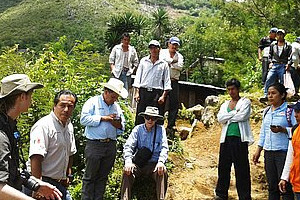 MWA-LAP: Mexico |
 TESO North School and Community WASH Project |
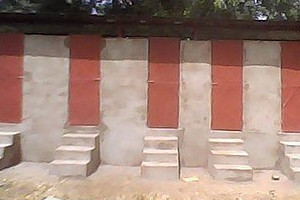 Eau Hygiène et Assainissement |
 Eau, hygiène et assainissement |
 Project Water4Tomorrow | ||
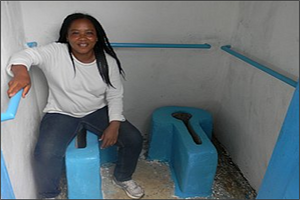 WaterAid Rural WASH Project |
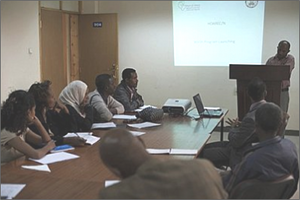 Water Sanitation and Hygiene Project |
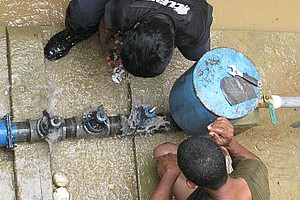 MWA-LAP: Nicaragua |
 WASH Alliance project, AMREF in Ethiopia |
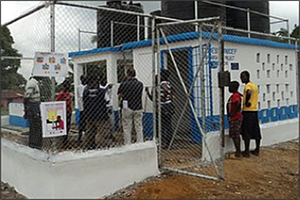 Urban WASH II in Monrovia | ||
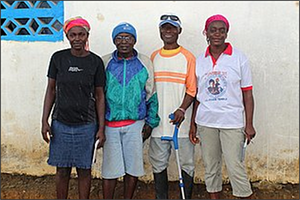 Accelerating Sanitation and Water for All 1 |
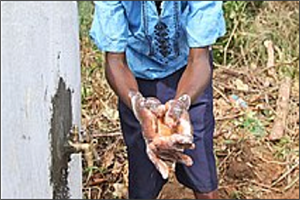 Child Friendly School WASH Project II |
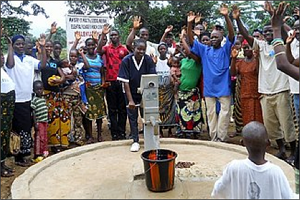 Rural Boreholes and Rehabilitation 1 |
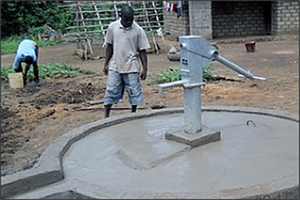 Panta District Rural Water Project 1 |
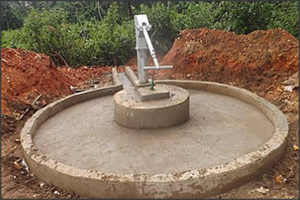 Integrated Community Water and Hygiene | ||
Manual drilling comparison of methods
Manual drilling links
Manual Drilling Sector in Africa 1 |
Manual Drilling Sector in Africa 2 |
2. Building Capacity (English) |
Drilling: 4. Mapping (English) |
Drilling: 2. Drilling Techniques |
- VIDEO: Manual drilling and pump installation, Madagascar by The Water Channel.
- Human-Powered Drilling Technologies, Richard Carter, Cranfield University, 2005.
- Groundwater and climate change in Africa: The Kampala Statement. Richard Taylor, University College London (UK), IAH Commission of Groundwater & Climate Change.

